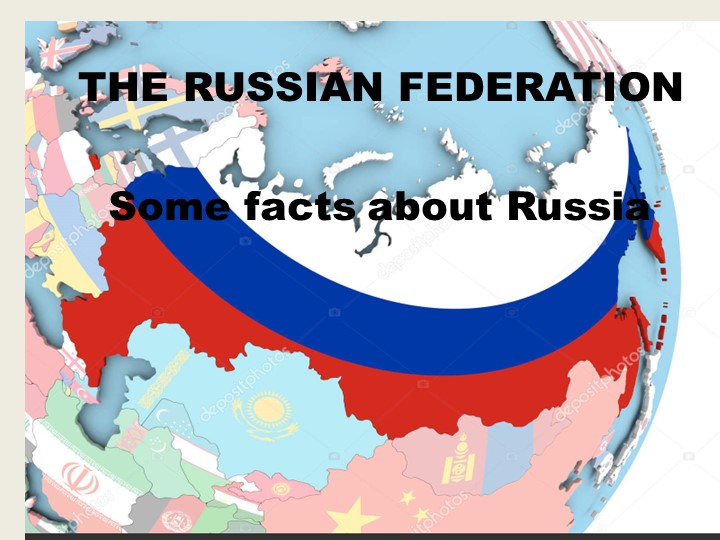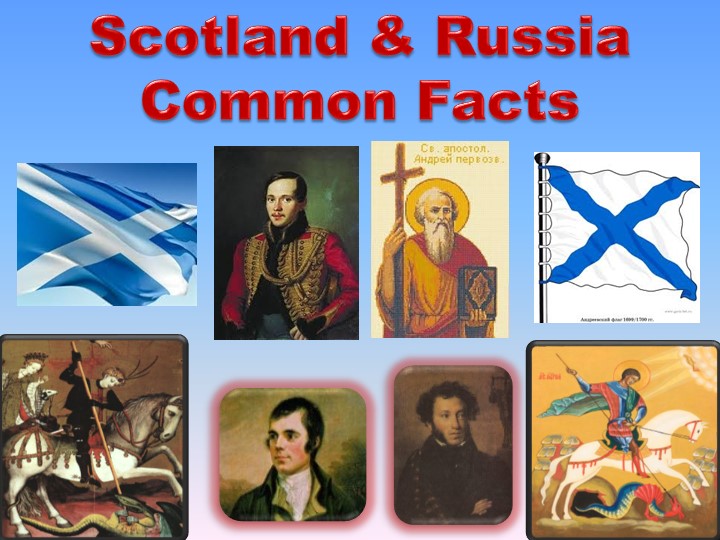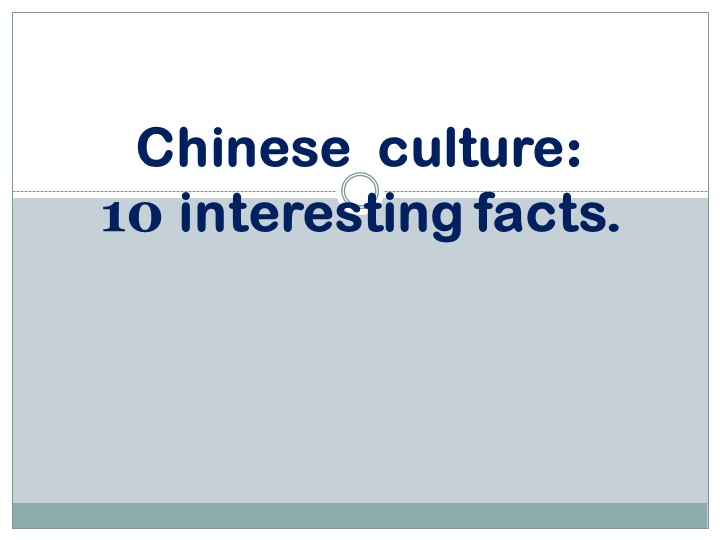Презентация - "Some facts about Russia презентация"

- Презентации / Другие презентации
- 0
- 02.04.25
Просмотреть и скачать презентацию на тему "Some facts about Russia презентация"
Сайт klass-uchebnik.com предлагает качественные учебные материалы для школьников, родителей и учителей. Здесь можно бесплатно читать и скачивать современные учебники, рабочие тетради, а также наглядные презентации по всем предметам школьной программы. Материалы распределены по классам и темам, что делает поиск максимально удобным. Каждое пособие отличается логичной структурой, доступной подачей материала и соответствует действующим образовательным стандартам. Благодаря простому языку, наглядным схемам и практическим заданиям, обучение становится легче и эффективнее. Учебники подойдут как для ежедневной подготовки к урокам, так и для систематического повторения перед экзаменами.
Особое внимание стоит уделить разделу с презентациями - они становятся отличным визуальным дополнением к теории, помогают лучше понять сложные темы и удерживают внимание учащихся. Такие материалы удобно использовать в классе на интерактивной доске или при самостоятельной подготовке дома. Все размещённые на платформе материалы проверены на актуальность и соответствие учебной программе. Это делает сайт надёжным помощником в образовательном процессе для всех участников: школьников, учителей и родителей. Особенно удобно, что всё доступно онлайн без регистрации и в свободном доступе.
Если вы ищете надежный источник для подготовки к урокам, контрольным и экзаменам - klass-uchebnik.com станет отличным выбором. Здесь вы найдёте всё необходимое, включая "Some facts about Russia презентация", чтобы сделать обучение более организованным, интересным и результативным.
Contents
The history ………………………………………………………………………………………...2
The geographical position……………………………………………………………………4
The national symbols of the country……………………………………………………6
The political system…………………………………………………………………………....7
The natural resources………………………………………………………………………….8
The culture and traditions……………………………………………………………………9
Moscow…………………………………………………………………............................12
The industry and progress………………………………………………………………….13
The education……..…………………………………………………………………………….14
Russia is a country of opportunities…………………………………………………..16
1
HISTORY
Ancient Russia
Ivan the Terrible
The early history of Russia is the history of migrating people and ancient principalities. Early Russia was not exactly "Russia", but a collection of towns that slowly united into an empire.
Ivan the Terrible is grand prince of Moscow and the first to be proclaimed tsar of Russia (from 1547). His reign saw the completion of the construction of a centrally administered Russian state and the creation of an empire that included non-Slav states
Peter I is Russian Pyotr Veliky, tsar of Russia was proclaimed emperor (imperator). He was one of his country’s greatest statesmen, organizers, and reformers.
2
Russian Pyotr Veliky
Catherine the Great
Tsar Nicholas II
Vladimir Lenin
Vladimir Lenin is inspirer and leader of the Bolshevik Revolution (1917), and the architect, builder, and first head (1917–24) of the Soviet state.
Nicholas II is the last Russian emperor (1894–1917), who, with his wife, Alexandra, and their children, was killed by the Bolsheviks after the October Revolution.
Catherine the Great is German-born empress of Russia (1762–96) who led her country into full participation in the political and cultural life of Europe, carrying on the work begun by Peter the Great. With her ministers she reorganized the administration and law of the Russian Empire and extended Russian territory, adding Crimea and much of Poland.
3
Russia is situated (located) in the eastern part of Europe and the northern part of Asia. Russia borders on 12 countries on land. In the south Russia borders on China, Mongolia, Korea, Kazakhstan, Georgia and Azerbaijan. In the west it borders on Norway, Finland, the Baltic States, Belorussia, and the Ukraine. The main areas of Russia are European part, Siberia and Far East. The Ural Mountains separate Europe from Asia. Russia is washed by 12 seas and 2 oceans. Russia’s greatest rivers are the Don and the Volga in its European part, and the Ob and the Yenisey in West Siberia. Lake Baikal is the largest fresh water lake in the world, one of the Seven Natural Wonders of the World, the pearl of Siberia.
Vocabulary:
To be situated – быть расположенным
To separate – разделять
To be washed by – быть омытым
Europe – Европа
Asia – Азия
Siberia – Сибирь
Far East – Дальний Восток
The Ural Mountains – Уральские горы
The Seven Natural Wonders of the World – семь чудес света.
5
The national symbols
6
The flag
The stripes are white, blue and red. These colours have always been symbolic in Russia: white-noble and sincere, blue-honest and devoted to friends, family and to the country. The red colour has always meant love and bravery.
The national emblem
The national emblem
is – a two headed eagle. It is the most ancient symbol of Russia.
The political system
The executive power is concentrated in the President and the Prime Minister, although the President is dominant as the head of the state. The President is the chairman of his consultative bodies: the State Council and the Security Council and is the commander-in-chief of the armed forces. The President determines basic domestic and foreign policies of the Russian Federation and he can veto draft bills.
The legislature in Russia is represented by the bicameral Federal Assembly. It consists of the State Duma (the lower house) and the Federation Council (the upper house). The Federal Assembly makes federal law, approves treaties and declares war. All bills must be first considered by the State Duma.
Judicial(Justice is administered in the Russian Federation only by the courts. The judicial power is autonomous and acts independently from the legislative and executive powers. Justice is administered in the forms of constitutional, civil, administrative and criminal proceedings)
7
The natural resources
On the territory of the Russian Federation, places have been found where oil, natural gas, coal, potash salts, nickel, tin, aluminum raw materials, tungsten, gold, platinum, asbestos, graphite, mica and other minerals can be found.
8
The culture and traditions
Russia’s unique and vibrant culture developed, as did the country itself, from a complicated interplay of native Slavic cultural material and borrowings from a wide variety of foreign cultures.
ballet literature music visual arts
The 19th century
The 19th ce
)
9
films
religion
architecture
Victory Day
One of the most remarkable public events in our country is the Victory Day. It is traditionally celebrated on the 9th of May. This patriotic holiday commemorates the victory of the USSR over the Nazi Germany. Every year in honour of this day in all cities across the country lots of parades and celebrations are held. Despite the fact that the holiday is celebrated in a flamboyant way, May 9 is a sad day for the majority of our population. Many people have lost their loved ones and close relatives during this ruthless war. the Victory Day is one of the greatest holidays during the year.
11
Moscow
Moscow is the capital of Russia. And of course, it is the centre of Russian economy, politics and culture. The city was built many centuries ago by Yuri Dolgorukiy, the Rurikid prince. It is situated on the banks of the Moscow River. Nowadays, Moscow is the largest city in the country with the population of more than 13 million residents.
The Russian capital is also considered to be one of the most beautiful cities in the world. Red Square is the heart of the city in all senses. The Kremlin and St. Basil's Cathedral are situated there. However, on the territory of the Kremlin, you can also see other cathedrals, the Bell Tower, the Tzar-Cannon and the Tzar-Bell, and the Palace of Congress. In addition, Moscow is famous for theatres. Bolshoi Opera house is considered one of the best theatres in the world.
There are over 80 universities in Moscow some of which are in the list of World’s prime higher education institutes. All in all, Moscow is a varied city that amazes with its sizes, culture, and people. Many foreigners come there not only as tourists but also to do business or to live in this vibrant capital.
12
The industry and progress
13
Floating nuclear power plant - Плавучая атомная электростанция
Mainline passenger liner МС-21-310-Магистральный пассажирский лайнер МС-21-310
Vaccine against new coronavirus infection Sputnik-V-Вакцина против новых коронавирусных инфекций Sputnik-V
Monoblock computer with touch screen-Моноблочный компьютер с сенсорным экраном
Lunar station “Luna-25”-Лунная станция “Луна-25”
Nuclear ice breaker "Arctic«- Атомный ледокол "Арктика
The education
Higher Education
At universities and institutes students train to become teachers, engineers, doctors, architects and other highly-qualified specialists. Average age for getting higher education in Russia is 17.
Kindergarten
Originally Russian education starts from the early age. Children can start going to kindergarten from the age of two, but this is not a compulsory education. It depends on parents’ decision.
Three types of schools: primary, secondary and high.
The primary school teaches its pupils elementary skills, such as reading, writing, counting. The most important period is the secondary school
Secondary vocational education
Technical school — a specialized secondary educational institution that implements the main professional educational programs of secondary vocational education and basic training;
14

















